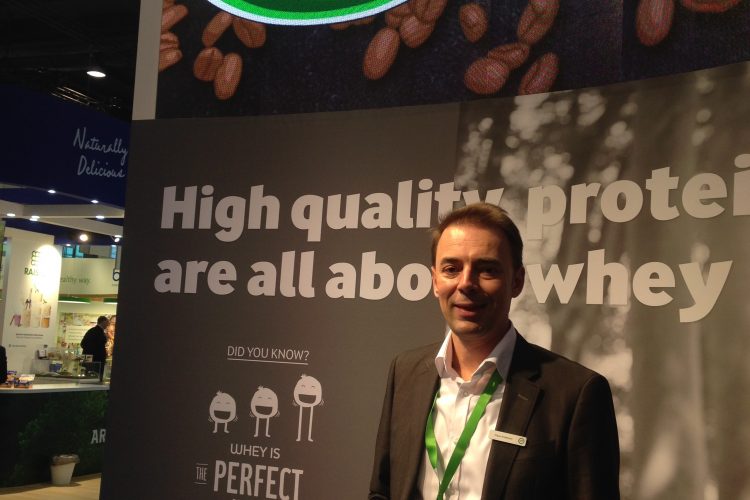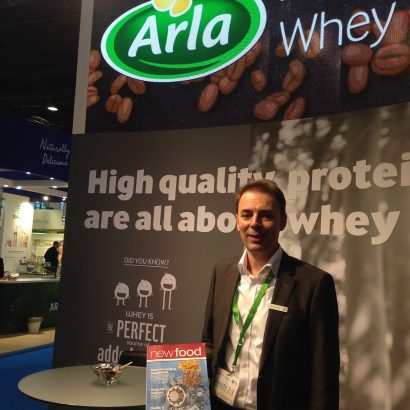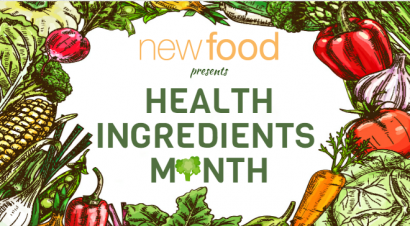How dairy can lead a new waste revolution – and enjoy the rewards | Health Ingredients Month
Posted: 3 February 2017 | Claus Andersen | Category & Application Manager | Arla Foods Ingredients | 1 comment
In the latest in our Health Ingredients Month, Arla Food Ingredients’ Claus Andersen argues that dairy companies can lead the way in tackling food waste…


Welcome to New Food‘s ‘Health Ingredients Month’ !
Throughout the online series we will be providing exclusive insight from Mintel, Innova Market Insights and leading food ingredients consultants as well as from Beneo, Kerry and Arla. Our aim is to pinpoint in particular how rapidly changing consumer trends are dictating how the food and beverage industry is evolving.


In our latest instalment, Arla Food Ingredients’ Claus Andersen argues that dairy companies can lead the way in tackling food waste.
There are many ways for dairy companies to improve their sustainability credentials. One of the most effective is to minimise waste and dispose of it responsibly.


It’s a highly effective measure in the quest to become a greener business. It’s also one that resonates with shoppers.
Waste is among the leading consumer concerns in today’s food and beverage industry and Euromonitor International has ranked sustainable food production among its top 10 trends[1].
But what do we really mean when we talk about ‘waste’?
And is there a case for challenging our preconceptions about what we class as waste and how we handle it? I think there is, and here I’ll explain why – while also revealing why many dairies may not realise that they are sitting on a potential goldmine.
It’s important to remember that there has already been one revolution in how the dairy industry views waste. Today, whey protein is one of the most valued ingredients in the food and beverage industry – one that is prized for its nutritional and functional characteristics. But it wasn’t always that way. Thirty years ago, the whey protein that was left over after making cheese was considered a major inconvenience. Unappreciated and unwanted, it was thrown away or sold off cheaply to farmers to feed to their livestock or to spread on their land as a fertiliser.
Nowadays, however, whey is highly sought after
As a result, many companies – including Arla Foods Ingredients – are building new factories to meet soaring demand for whey-based ingredients in multiple sectors of the nutritional products market, including the lifestyle, sports, infant and clinical nutrition categories. Whey also delivers excellent benefits in bakery, snack and dairy applications. It truly is a product formulator’s best friend.
So, what about that goldmine, you ask?
Well, despite the widespread recognition of the value of whey, many dairy companies are yet to realise the true value of another common whey-based by-product – acid whey.
“Acid whey actually contains the same minerals as milk…”
Acid whey is generated during the production of a number of popular dairy goods – most famously Greek yoghurt, but also a number of cheeses including cottage and cream cheeses. Yields for some of these dairy products are typically only 25-50% of the milk used. In the case of Greek yoghurt, for example, only 33% of the milk ends up in the finished product: the remaining two thirds is acid whey.
Today most dairy companies continue to treat acid whey as waste
Like standard whey was three decades ago, it is still often disposed of in waste streams or sold for little or no profit to farmers. The disposal of acid whey, volumes of which have risen following recent strong growth in Greek yoghurt sales, has attracted very unwelcome headlines in recent years. Some environmentalists have argued that it causes pollution and that, with consumption of Greek yoghurt rising, the situation in this respect is getting worse. This has prompted a backlash and debate about whether Greek yoghurt production is unsustainable in ecological terms.

But it need not be this way. Acid whey actually contains the same minerals as milk, which means it offers many of the same benefits to bones, teeth and general health. And when further processed – in combination with regular whey proteins – it offers enormous potential as the base for a range of dairy products.
Using acid whey like this – instead of throwing it away or selling it off for next-to-nothing – will enable dairies to boost their efficiency by using 100% of their milk and not just a portion of it. This will impact positively on their levels of efficiency. But it will also provide a significant boost to their sustainability credentials and help safeguard the environment, too.
If you’ve read this far, then it’s likely that you have more than a passing interest in acid whey. You might also be wondering how you can go about using it in the ways I’ve described. In fact, it’s easier than you think. Just speak to your dairy ingredients supplier about the options available. Ask them about the whey protein ingredients they offer that can help you transform your goldmine – acid whey, that is – into high quality dairy products that consumers will love. Put your dairy at the vanguard of the new waste revolution – and enjoy the rewards.
[1] 10 global consumer trends for the next five years, Euromonitor (2012)
New Food’s ‘Health Ingredients Month’
Tom Clifford, PhD, Sport and Exercise Nutrition, University of Northumbria – Can beetroot help relieve muscle pain after exercise?
Petr Menšík, Manager, EU Affairs, ECCO, The European Consulting Company – Defining the term ‘natural’ in food and beverage
Claus Andersen, Category & Application Manager, Arla Foods Ingredients – How dairy can lead a new waste revolution
Alex Murtough, Field & Marketing Manager, Oppo – Healthy food? It’s out of reach for most of us
Kevin Bael, Product Manager, Specialty Rice Ingredients, Beneo – The unique, natural value of rice starch
Andrea Zangara, Centre for Human Psychopharmacology, Swinburne University – Plant-based ingredients and their cognitive benefits











Thanks for sharing a wonderful post.